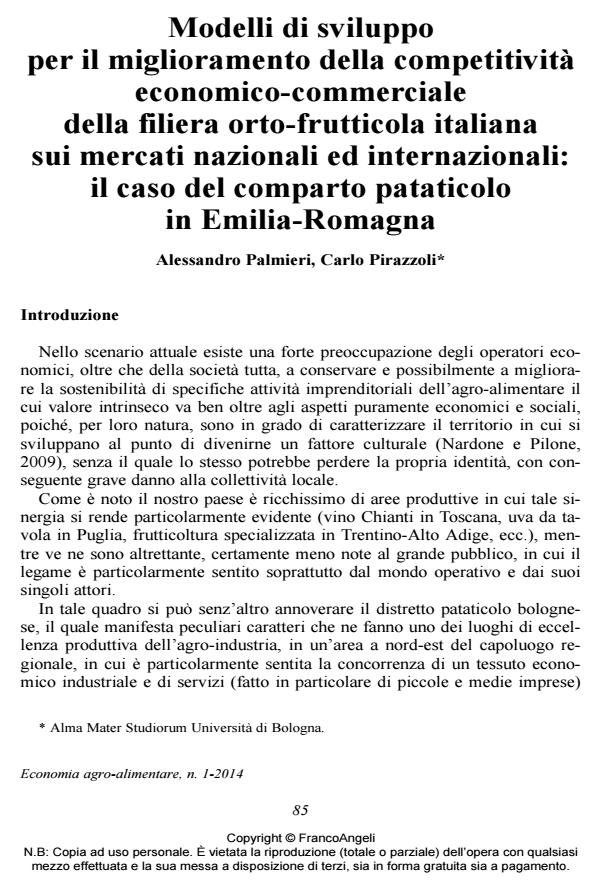Modelli di sviluppo per il miglioramento della competitività economico-commerciale della filiera orto-frutticola italiana sui mercati nazionali ed internazionali: il caso del comparto pataticolo in Emilia-Romagna
Titolo Rivista ECONOMIA AGRO-ALIMENTARE
Autori/Curatori Alessandro Palmieri, Carlo Pirazzoli
Anno di pubblicazione 2014 Fascicolo 2014/1
Lingua Italiano Numero pagine 32 P. 85-116 Dimensione file 309 KB
DOI 10.3280/ECAG2014-001005
Il DOI è il codice a barre della proprietà intellettuale: per saperne di più
clicca qui
Qui sotto puoi vedere in anteprima la prima pagina di questo articolo.
Se questo articolo ti interessa, lo puoi acquistare (e scaricare in formato pdf) seguendo le facili indicazioni per acquistare il download credit. Acquista Download Credits per scaricare questo Articolo in formato PDF

FrancoAngeli è membro della Publishers International Linking Association, Inc (PILA)associazione indipendente e non profit per facilitare (attraverso i servizi tecnologici implementati da CrossRef.org) l’accesso degli studiosi ai contenuti digitali nelle pubblicazioni professionali e scientifiche
The Italian fruit and vegetable supply chain has been in a critical situation for several years. In recent times this situation has been getting even worse, mainly on account of the general economic crisis, which has triggered strong price competition among the great retail chains, resulting in a fall in prices at farm level. In this situation, the potato supply chain has become one of the weakest among the fruit and vegetables sectors in Italy. Both at farm and processing-industry level Italy has several characteristics that make it virtually impossible to compete with large producers in central and northern Europe. Consequently, the potato supply chain has been continually forced to innovate and make sustained efforts to valorise and differentiate its product from the largely mass produced one that is offered in Europe. This paper focuses on a locality in the province of Bologna that is one of the most important in the potato sector in Italy. Its aim is to analyse the supply chain and identify ways to turn round the present situation, which has very narrow margins and is unsustainable in the long term. More particularly, the study shows empirically that an increase in the level of integration between the actors in the supply chain is absolutely essential. This includes both horizontal integration, by concentrating supply among the producer organizations, and vertical integration, by extending the contractual arrangements between producers and traders right up to the final link in the chain, the mass distribution retailers. Another type of horizontal integration the study suggests is so-called "organized direct selling", showing how this emerging form of selling can be more suitable for a vegetable such as the potato, than other forms of direct selling (farm selling, farmers’ markets, etc.).
Parole chiave:Potatoes, supply chain, integration, organized direct selling
Jel codes:Q11, Q12, Q13
Alessandro Palmieri, Carlo Pirazzoli, Modelli di sviluppo per il miglioramento della competitività economico-commerciale della filiera orto-frutticola italiana sui mercati nazionali ed internazionali: il caso del comparto pataticolo in Emilia-Romagna in "ECONOMIA AGRO-ALIMENTARE" 1/2014, pp 85-116, DOI: 10.3280/ECAG2014-001005